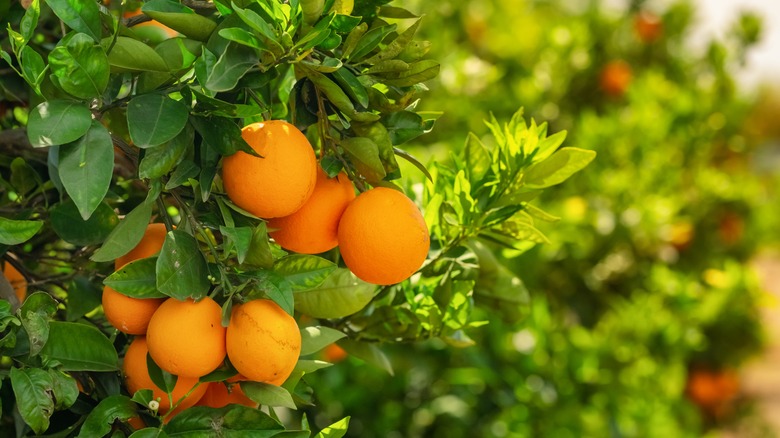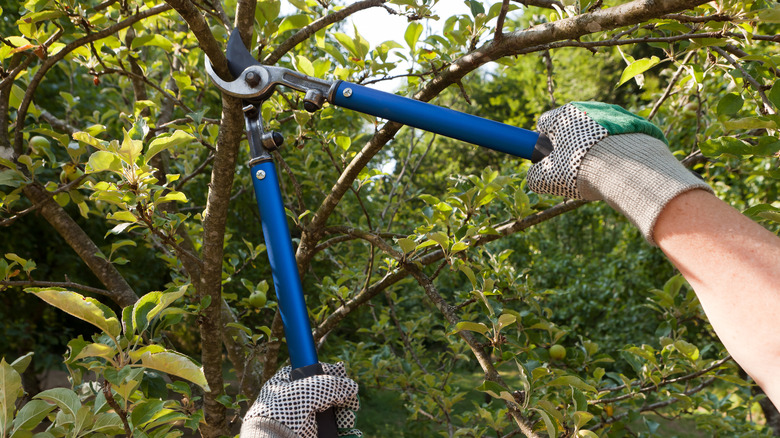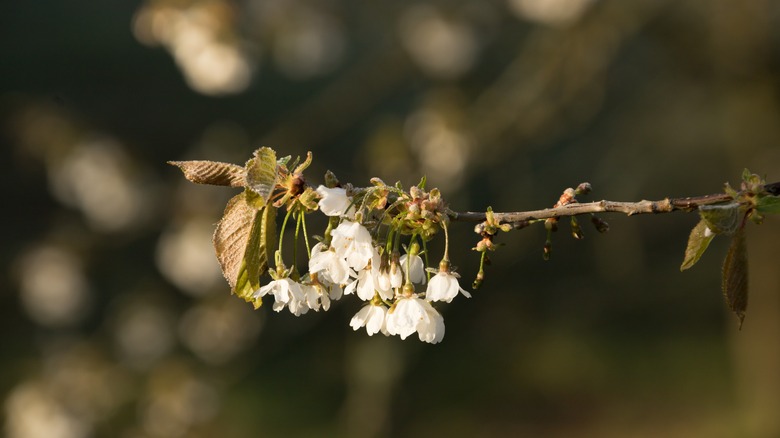How To Help Your Garden's Fruit Trees That Aren't Growing Fruit
It's disappointing to put time and effort into a fruit tree, only to find it growing leaves but not producing anything edible. Before jumping to pruning, pollination fixes, or organic fertilizers, it's important to rule out a few core factors that often get overlooked, especially by new gardeners. First, check whether the tree you planted is actually suited to your environment.
Some fruit trees simply won't thrive in certain soils or climates, no matter how much care they receive. For example, sweet cherry trees struggle in wet or clay-heavy soils, while pear trees tend to handle those conditions better than most other fruit varieties. It could even be the specific variety and rootstock that you need to consider. If your tree is fighting the environment, it won't prioritize fruit.
Light is another common issue. Fruit trees need six to eight hours of direct sunlight a day to produce fruit. If nearby trees, fencing, or structures cast too much shade, the tree may grow healthy foliage but never flower. The weather also plays a big role. Sudden frosts, droughts, or heavy rain during flowering can affect the tree's ability to fruit. And if your tree is young, it may simply need more time — some trees take several years before they start producing. Making sure your tree has the right growing conditions gives it the best chance to succeed before you try anything else.
Excessive growth and poor pollination will limit fruit production
When a fruit tree keeps growing but won't produce fruit, one of the most common culprits is excessive growth. When a tree puts all its energy into growing branches and leaves, there's often little left for flowering and fruiting. Too much nitrogen from over-fertilizing often causes this problem. Even nearby lawn fertilizer can reach the tree's roots and trigger leafy growth. If your tree grows long, lush shoots but doesn't bloom, reduce nitrogen and switch to a fertilizer higher in phosphorus and potassium.
Pruning is another common issue. Heavy or poorly timed cuts, especially heading cuts that just shorten branches, often trigger more leafy growth instead of fruit. Focus on thinning cuts instead, which remove entire limbs at the base and improve light and airflow through the canopy. Be sure to follow pruning guidelines for your specific tree variety, as different species have different flowering habits.
Pollination can also limit fruiting. If you don't see many bees during bloom season, then poor pollination could be the issue. Planting a compatible variety around fruit trees, adding pollinator-friendly flowers, or even hand-pollinating with a soft brush can help.
Weather and frost can stop your tree from fruiting too
If your fruit tree bloomed but still didn't produce fruit, there's a good chance cold weather is to blame. Late spring frosts, even brief ones, can damage the flower buds just enough to prevent fruit from forming. A sudden return to cold weather after a warm spell can cause serious harm to developing flower buds. As fruit buds start to swell and open, they become more vulnerable to frost.
Trees in low-lying parts of the yard are more likely to be hit by frost. If your tree is in a cold pocket, consider transplanting it to a slightly higher or more protected spot near a wall or fence. You can also use a horticultural fleece or plastic bags during cold snaps to shield blossoms from frost. Just be sure to remove it during the day so pollinators can still reach the flowers. When a cold snap does roll through unexpectedly, you could try to run water over the frosted blooms continuously to thaw them.
If spring frost is a recurring problem in your area, switch to late-blooming fruit tree varieties, like apples or pears, or try cultivars known for better cold tolerance. This won't fix fruiting for the current season, but it can set your tree up for better fruiting in years to come. Even though frost damage is hard to reverse in the moment, the right location, variety, and protection can make a big difference going forward.


